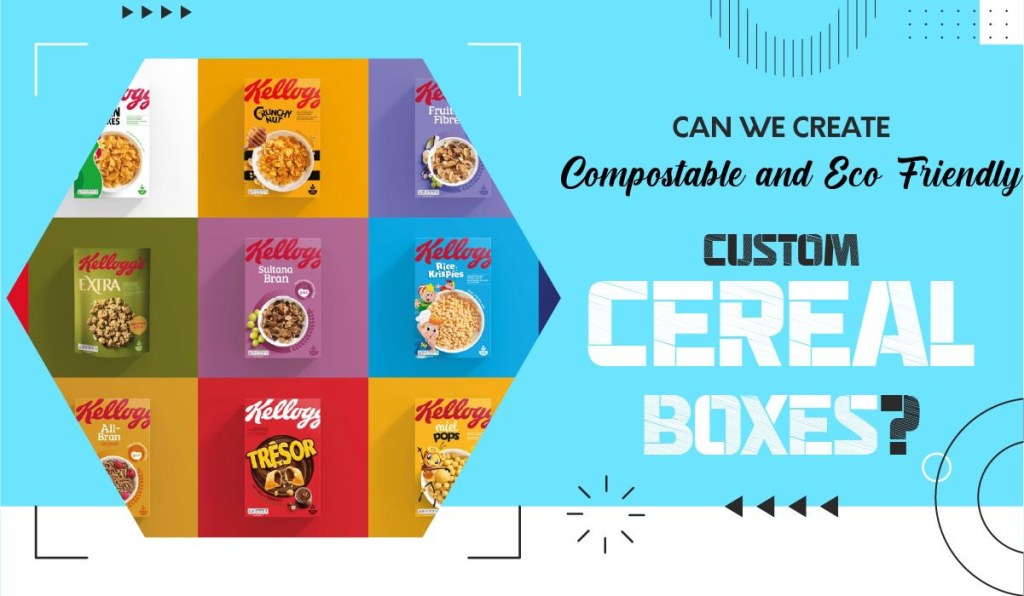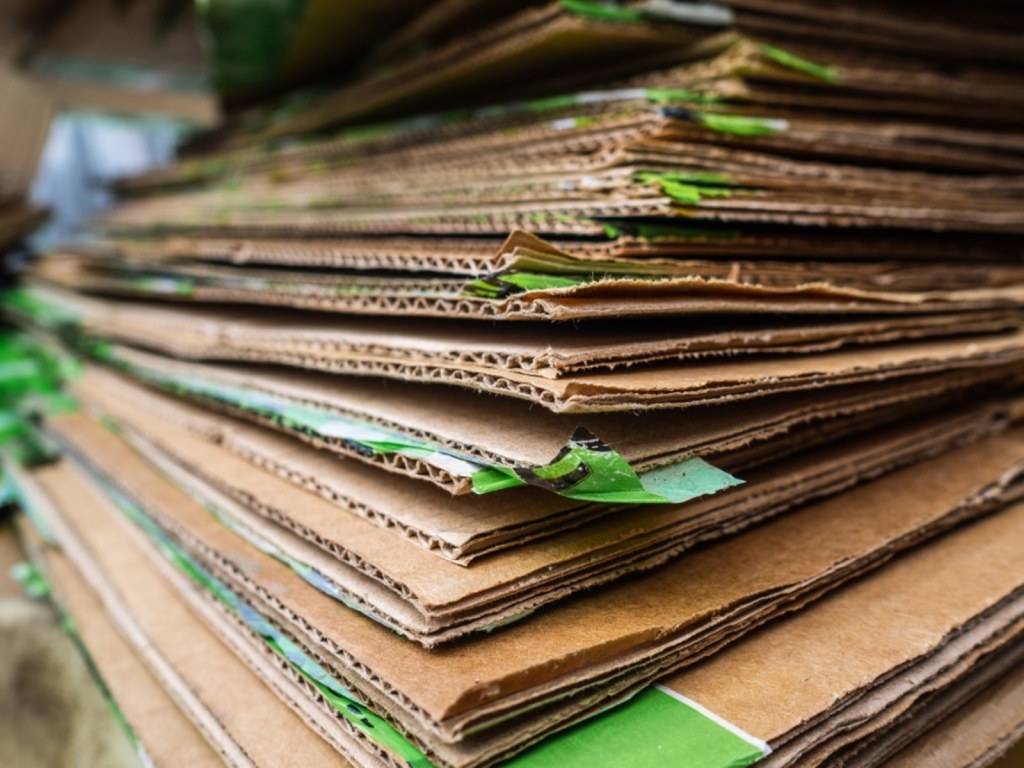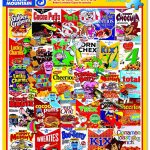Unlock The Secret: Can Cereal Boxes Be Composted? Discover The Sustainable Solution Now!
Can Cereal Boxes Be Composted?
Introduction
Dear Cereal Enthusiast,
2 Picture Gallery: Unlock The Secret: Can Cereal Boxes Be Composted? Discover The Sustainable Solution Now!


Welcome to our article where we delve into the intriguing question of whether cereal boxes can be composted. As a dedicated cereal connoisseur, you may have found yourself wondering about the environmental impact of the boxes that hold your favorite morning treats. In this article, we will explore the compostability of cereal boxes and provide you with valuable insights.
Composting is a sustainable practice that allows organic waste to decompose naturally and transform into nutrient-rich soil. By composting, we can reduce waste and contribute to a healthier environment. However, not all materials are suitable for composting, and it is essential to understand whether cereal boxes can be included in your compost pile.

Image Source: instantcustomboxes.com
In this comprehensive guide, we will examine the different aspects of composting cereal boxes, including what they are made of, who can compost them, when and where they can be composted, why it is important to consider their compostability, and how to go about composting them. So, let’s dig in and discover the answers to these burning questions!
What Are Cereal Boxes Made Of?
📦 Cereal boxes are commonly made of cardboard or paperboard, which are materials derived from trees. These materials provide the necessary strength and durability to protect the cereal during transportation and storage. However, the specific composition of cereal boxes can vary depending on the brand and packaging design.
🌿 It is important to note that not all cereal boxes are created equal when it comes to composting. Some cereal boxes have additional coatings, such as plastic or wax, to enhance their resistance to moisture and maintain the freshness of the cereal. These coatings can affect the compostability of the boxes and need to be taken into consideration.
Coated vs. Uncoated Cereal Boxes
🌱 Uncoated cereal boxes, which are free from any additional coatings, are more suitable for composting. These boxes can break down more easily during the composting process, allowing them to integrate harmoniously with other organic materials.

Image Source: gardeningknowhow.com
🌱 On the other hand, coated cereal boxes pose a challenge in composting. The plastic or wax coatings prevent the boxes from breaking down effectively, leading to potential contamination in the compost. Therefore, it is crucial to identify whether your cereal boxes are coated or uncoated before composting them.
Who Can Compost Cereal Boxes?
🌍 Composting is a practice that anyone can adopt, whether you have a spacious backyard or live in an urban apartment. Cereal boxes can be composted by individuals who engage in home composting, community composting programs, or have access to municipal composting facilities. The ability to compost cereal boxes depends on the resources available to you and the composting regulations in your area.
When and Where Can Cereal Boxes Be Composted?
📆 The composting of cereal boxes can be done throughout the year, as long as your compost pile maintains the necessary conditions for decomposition. The ideal composting environment includes a balance of carbon-rich and nitrogen-rich materials, proper aeration, moisture levels, and regular turning of the compost pile.
🏡 Cereal boxes can be composted in various settings, depending on the composting method you choose. If you have a backyard compost pile, you can simply add the cereal boxes to the mix. Alternatively, you can participate in community composting programs where designated composting sites are available. In urban areas, municipal composting facilities often accept cereal boxes as part of their composting process.
Why Is It Important to Consider the Compostability of Cereal Boxes?
🌱 Considering the compostability of cereal boxes is crucial in promoting sustainable waste management practices. By composting cereal boxes, we can divert these materials from landfills, where they would contribute to environmental degradation and greenhouse gas emissions.
🌱 Composting cereal boxes also allows us to close the loop in the recycling process. Instead of relying solely on recycling, which requires energy-intensive processes to transform materials into new products, composting returns organic matter back to the earth in the form of nutrient-rich soil.
How to Compost Cereal Boxes?
🔨 Composting cereal boxes involves a few simple steps to ensure their proper decomposition:
Start by removing any plastic liners, bags, or excessive tape from the cereal boxes.
Shred the cereal boxes into smaller pieces to facilitate the composting process.
Add the shredded cereal boxes to your compost pile, alternating with other organic materials such as fruit and vegetable scraps, yard waste, and coffee grounds.
Maintain the moisture levels in your compost pile by watering it regularly, ensuring it remains damp but not waterlogged.
Aerate the compost pile by turning it regularly with a pitchfork or shovel to provide oxygen for the decomposition process.
Monitor the composting process, ensuring the temperature stays within the optimal range of 135°F to 160°F (57°C to 71°C) for proper decomposition.
Once the composting process is complete, the cereal boxes will have transformed into nutrient-rich compost that can be used to nourish your garden or potted plants.
Pros and Cons of Composting Cereal Boxes
Advantages of Composting Cereal Boxes
🌿 Let’s explore the advantages of composting cereal boxes:
Environmental Benefits: Composting cereal boxes reduces waste, promotes recycling, and contributes to a healthier environment.
Soil Enrichment: The compost resulting from cereal boxes enhances soil fertility, providing essential nutrients for plant growth.
Reduced Landfill Waste: By composting cereal boxes, we divert them from overflowing landfills, reducing the need for additional landfill space.
Sustainable Recycling: Composting is a sustainable alternative to recycling, as it returns organic materials directly to the earth.
Cost Savings: Composting at home can reduce the need for commercial fertilizers, saving money in the long run.
Disadvantages of Composting Cereal Boxes
🌱 However, there are also some potential disadvantages to consider:
Coatings and Contaminants: Coated cereal boxes may introduce contaminants to the compost, affecting its quality and usability.
Composting Infrastructure: Access to composting facilities or suitable composting spaces may be limited in certain areas, restricting the composting options for cereal boxes.
Time and Effort: Composting requires time, effort, and regular maintenance to ensure successful decomposition.
Space Limitations: Urban dwellers or those with limited outdoor space may find it challenging to accommodate a compost pile.
Seasonal Limitations: Composting cereal boxes in colder climates can be more challenging due to slower decomposition rates during winter months.
Frequently Asked Questions (FAQ)
Q1: Can I compost cereal boxes with plastic liners?
A1: It is best to remove any plastic liners from cereal boxes before composting them. The presence of plastic can hinder the composting process and potentially contaminate the resulting compost.
Q2: Can I compost cereal boxes with glossy coatings?
A2: Cereal boxes with glossy coatings are more challenging to compost. It is recommended to check with your local composting facility or consider alternative disposal methods, such as recycling.
Q3: Do I need to shred cereal boxes before composting?
A3: Shredding cereal boxes into smaller pieces can accelerate the composting process and facilitate their breakdown. However, if shredding is not feasible, you can still compost them as larger pieces.
Q4: Can I compost cereal boxes in an apartment?
A4: If you live in an apartment, you can explore indoor composting methods such as vermicomposting with worms or Bokashi composting. These methods are suitable for smaller spaces and can effectively compost cereal boxes.
Q5: How long does it take for cereal boxes to compost?
A5: The time it takes for cereal boxes to compost depends on various factors, including the composting method used, the size of the boxes, and the environmental conditions. Typically, it can take several months to a year for cereal boxes to fully decompose.
Conclusion
🌱 In conclusion, cereal boxes can indeed be composted, provided they are free from plastic or glossy coatings. Composting these boxes not only reduces waste but also contributes to a greener and more sustainable future. By embracing composting practices, we can play an active role in closing the loop and promoting the circular economy.
🌱 So, the next time you enjoy your favorite bowl of cereal, remember that the box it came in can find new life as nutrient-rich compost. Let’s make a positive impact on the environment, one compost pile at a time!
Final Remarks
Disclaimer: The information provided in this article is for educational purposes only. Before composting cereal boxes, it is advisable to check with local composting facilities or follow the guidelines provided by your municipality. Composting regulations may vary depending on your location. Always prioritize environmental sustainability and follow proper waste management practices.
This post topic: Cereal



